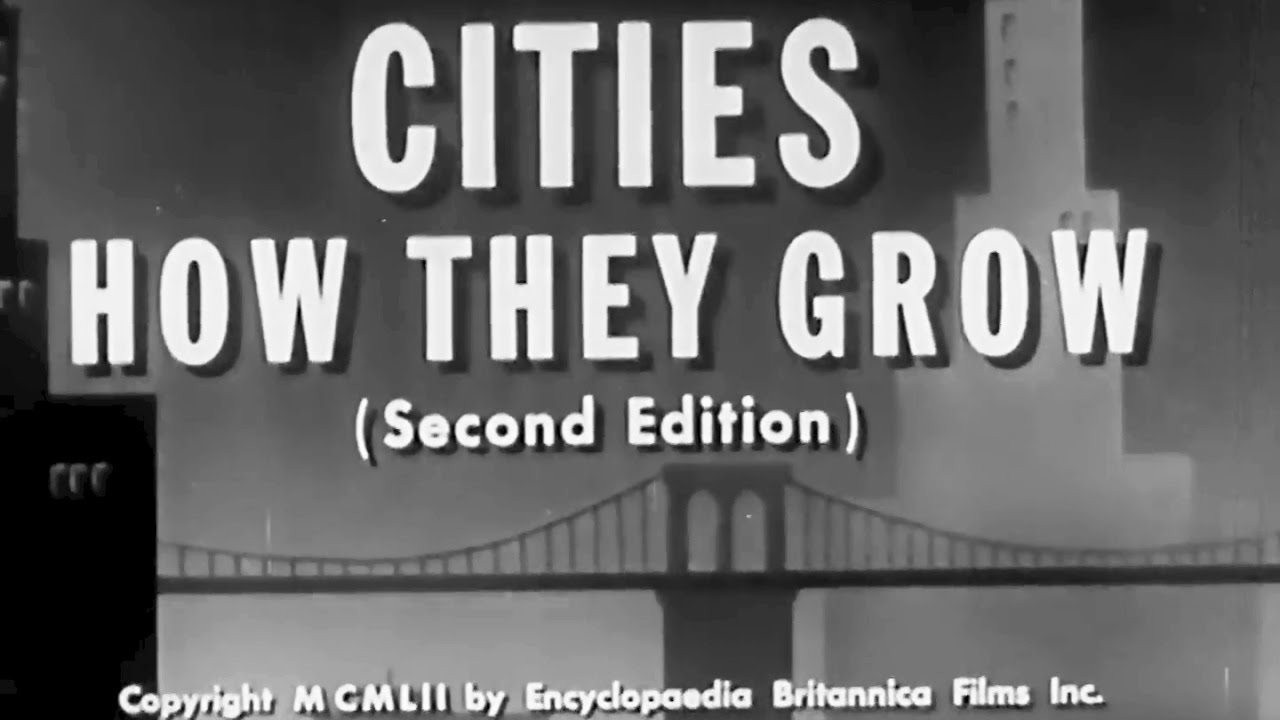Encyclopaedia Britannica Films playlist:
American History, US HIstory, United States History Playlist:
more at
“Encyclopedia Britannica Films in collaboration with Robert S. Lynd, PhD, Columbia University.”
Reupload of a previously uploaded film with improved video & sound.
Public domain film from the Library of Congress Prelinger Archives, slightly cropped to remove uneven edges, with the aspect ratio corrected, and one-pass brightness-contrast-color correction & mild video noise reduction applied.
The soundtrack was also processed with volume normalization, noise reduction, clipping reduction, and/or equalization (the resulting sound, though not perfect, is far less noisy than the original).
Urbanization is the physical growth of urban areas as a result of rural migration and even suburban concentration into cities, particularly the very large ones. The United Nations projected that half of the world’s population would live in urban areas at the end of 2008. By 2050 it is predicted that 64.1% and 85.9% of the developing and developed world respectively will be urbanised.
Urbanization is closely linked to modernisation, industrialisation, and the sociological process of rationalisation. Urbanisation can describe a specific condition at a set time, i.e. the proportion of total population or area in cities or towns, or the term can describe the increase of this proportion over time. So the term urbanisation can represent the level of urban relative to overall population, or it can represent the rate at which the urban proportion is increasing.
Urbanization is not merely a modern phenomenon, but a rapid and historic transformation of human social roots on a global scale, whereby predominantly village culture is being rapidly replaced by predominantly urban culture. The last major change in settlement patterns was the accumulation of hunter-gatherers into villages many thousand years ago. Village culture is characterised by common bloodlines, intimate relationships, and communal behavior whereas urban culture is characterised by distant bloodlines, unfamiliar relations, and competitive behavior. This unprecedented movement of people is forecast to continue and intensify in the next few decades, mushrooming cities to sizes incomprehensible only a century ago. Indeed, today, in Asia the urban agglomerations of Dhaka, Karachi, Mumbai, Delhi, Manila, Seoul and Beijing are each already home to over 20 million people, while the Pearl River Delta, Shanghai-Suzhou and Tokyo are forecast to approach or exceed 40 million people each within the coming decade. Outside Asia, Mexico City, Sao Paulo, New York City, Lagos and Cairo are fast approaching or already home to over 20 million people…
Movement
As more and more people leave villages and farms to live in cities, urban growth results. The rapid growth of cities like Chicago in the late 19th century, Tokyo in the mid twentieth, and Mumbai in the 21st century can be attributed largely to rural-urban migration. This kind of growth is especially commonplace in developing countries. This phenomenal growth can also be attributed to the lure of not just economic opportunities, but also to loss or degradation of farmland and pastureland due to development, pollution, land grabs, or conflict, the attraction and anonymity of hedonistic pleasures of urban areas, proximity and ease of mass transport, as well as the opportunity to assert individualism.
The rapid urbanization of the world’s population over the twentieth century is described in the 2005 Revision of the UN World Urbanization Prospects report. The global proportion of urban population rose dramatically from 13% (220 million) in 1900, to 29% (732 million) in 1950, to 49% (3.2 billion) in 2005. The same report projected that the figure is likely to rise to 60% (4.9 billion) by 2030…
According to the UN State of the World Population 2007 report, sometime in the middle of 2007, the majority of people worldwide will be living in towns or cities, for the first time in history; this is referred to as the arrival of the “Urban Millennium” or the ‘tipping point’. In regard to future trends, it is estimated 93% of urban growth will occur in developing nations, with 80% of urban growth occurring in Asia and Africa…
Urbanization occurs as individual, commercial, and governmental efforts to reduce time and expense in commuting and transportation while improving opportunities for jobs, education, housing, and transportation. Living in cities permits the advantages of the opportunities of proximity, diversity, and marketplace competition…

